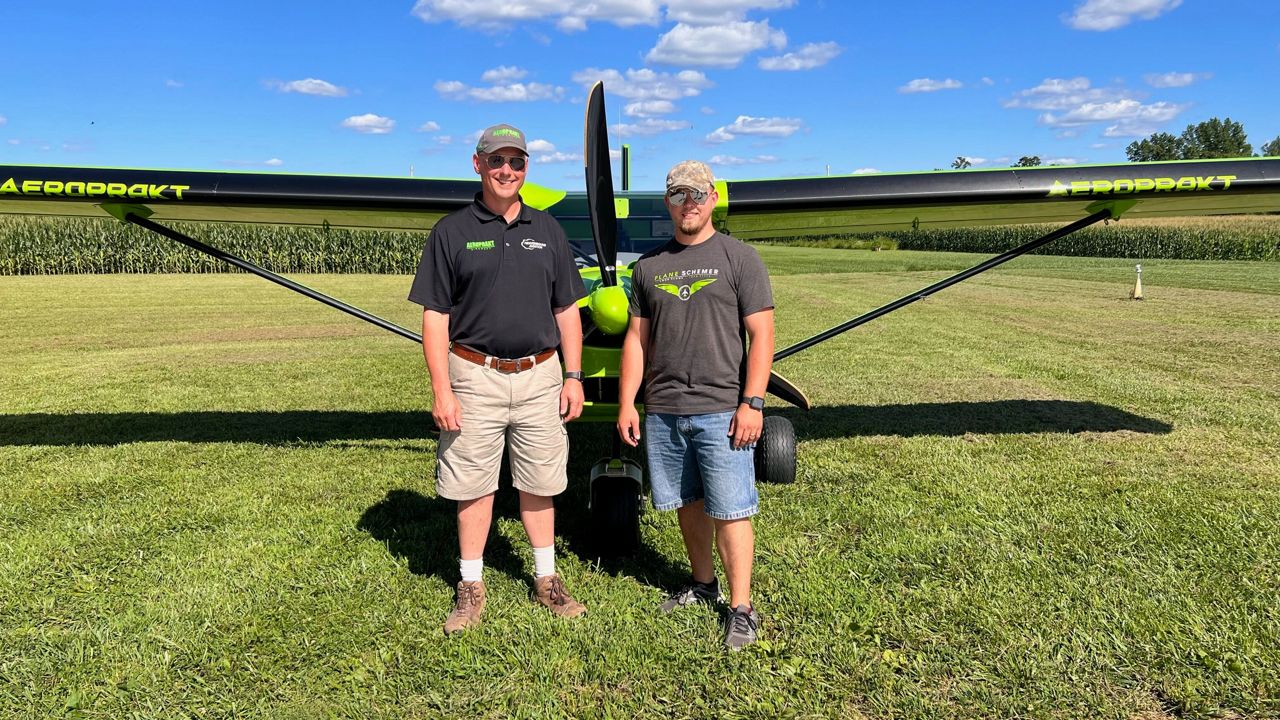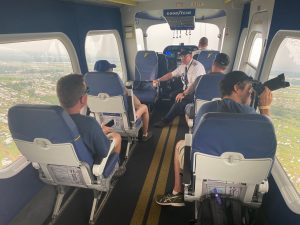AKRON, Ohio — Logan Schmidt was diagnosed with Long QT syndrome when he was four-years-old, now he is advocating for automated external defibrillators (AEDs) to be placed in public spaces to help others be prepared.
Long QT is an uncommon but not rare heart signaling disorder that can cause fast, chaotic heartbeats.
Schmidt said he was diagnosed with this heart condition after spending the day at the pool with his family when he was four.
“I was just sitting there in the pool and my parents thought I was just playing pretend dead,” Schmidt said. “But they said ‘come on, get up’ to me and then they noticed my eyes starting to roll in the back of my head and my arms starting to twitch.”
Dr. John Clark, director of the Pediatric Arrhythmia Center at Akron Children’s Hospital, diagnosed Schmidt with Long QT syndrome.
Clark said when diagnosing this heart condition, a key clue could be fainting in the water.
“Fainting in water is not common,” Clark said. “The common faint happens when we are upright and we live in a world of gravity, and blood pulls in our legs and we need it in our brain. So, fainting in water is never normal.”
Clark said he typically diagnoses about 12 new cases of Long QT each year.
“Long QT is a difficult disease because it doesn’t cause symptoms on a day-to-day basis,” said Dr. Clark. “It doesn’t cause a murmur. It doesn’t cause chest pain. It doesn’t cause you to turn blue or to be short of breath. It doesn’t have the things associated with heart disease. These patients act perfectly normal until a serious event.”
Schmidt said he believes having this condition changed the way he lived his life. Besides hunting, fishing and golf, he chose to not play other sports.
“So what could trigger this is being scared, going to a haunted house or something and you are going through and somebody startles you,” Schmidt said. “You know, that little increase of heart rate could actually trigger the condition or jumping in a lake and that cold water hitting you.”
Long QT syndrome can be inherited, so Schmidt has had to do several tests to make sure his six-month-old son, Casen, doesn’t have it.
“It was kind of scary starting out,” Schmidt said. “Because we do also have a 50/50 chance of passing this condition on to them.“
Now, this new dad and his long-time doctor are advocating for all public places like schools, workplaces and sports facilities have AEDS on hand and the personnel trained to use them.
“AEDs are absolutely the answer for almost every cause of sudden death in children. I cannot over-emphasize the value of AEDs,” Clark said. “Having one nearby is the best option for saving a child’s life when a rhythmic event or cardiac arrest is involved. If an AED is used within three minutes, the survivability rate is approaches 100%.”




